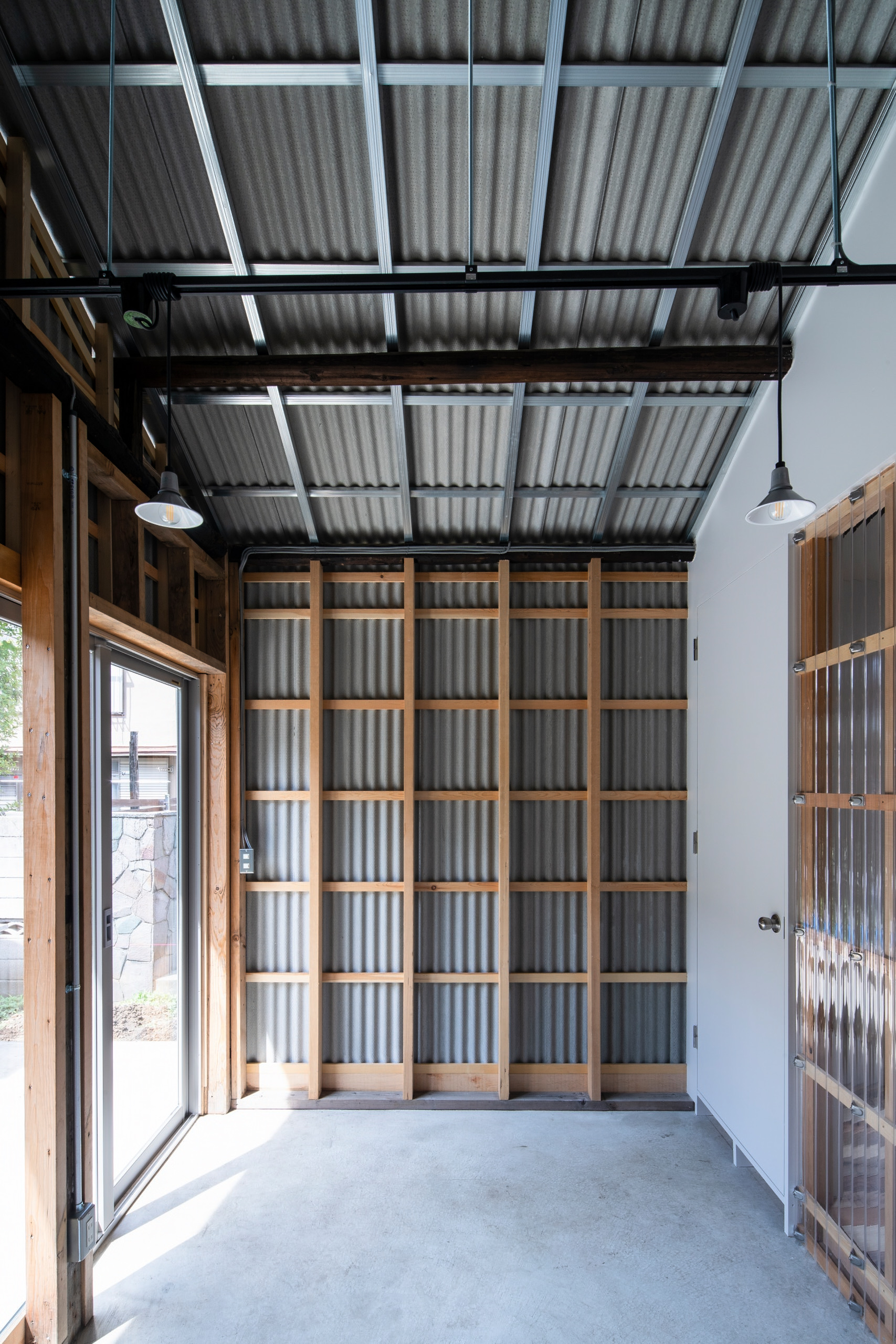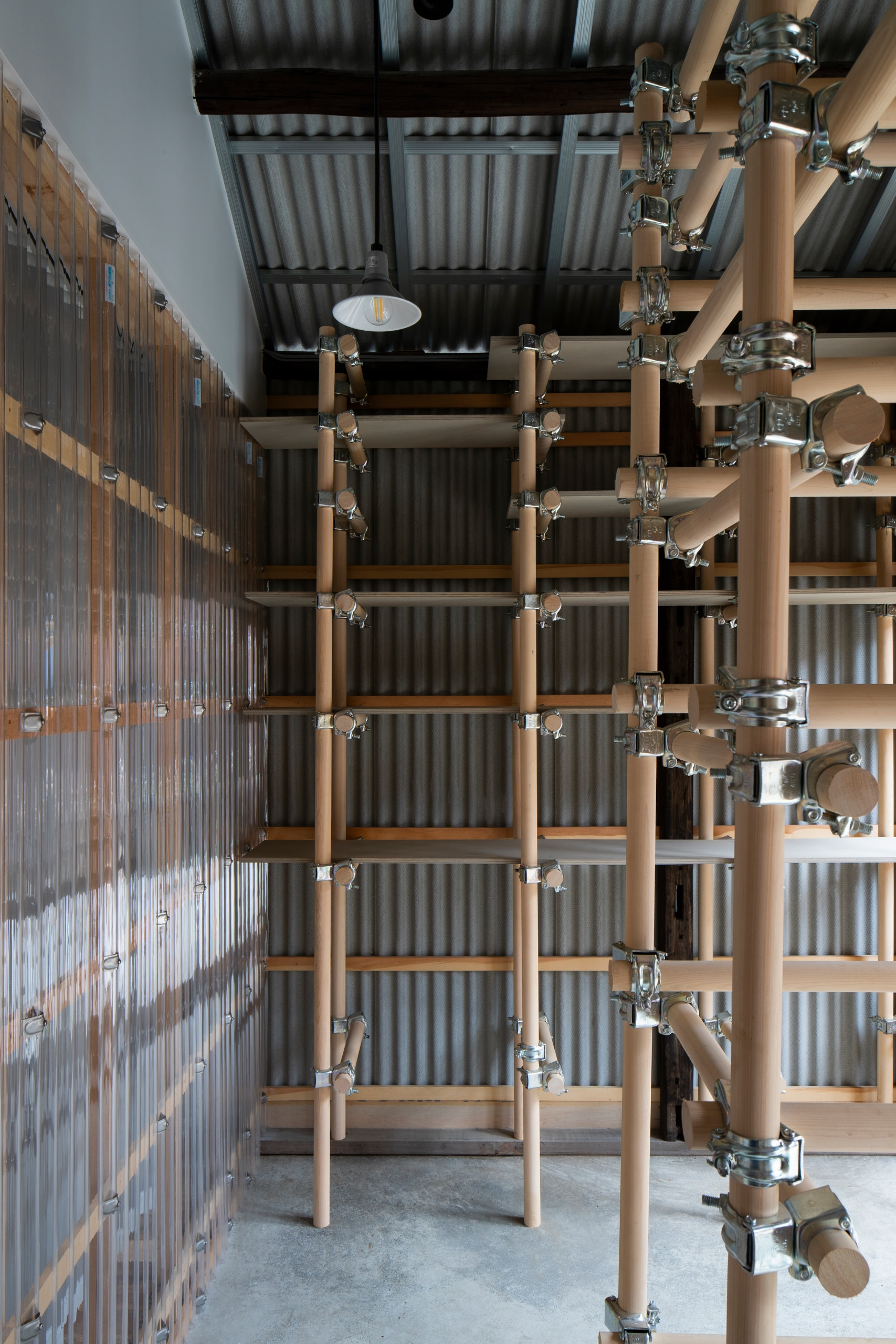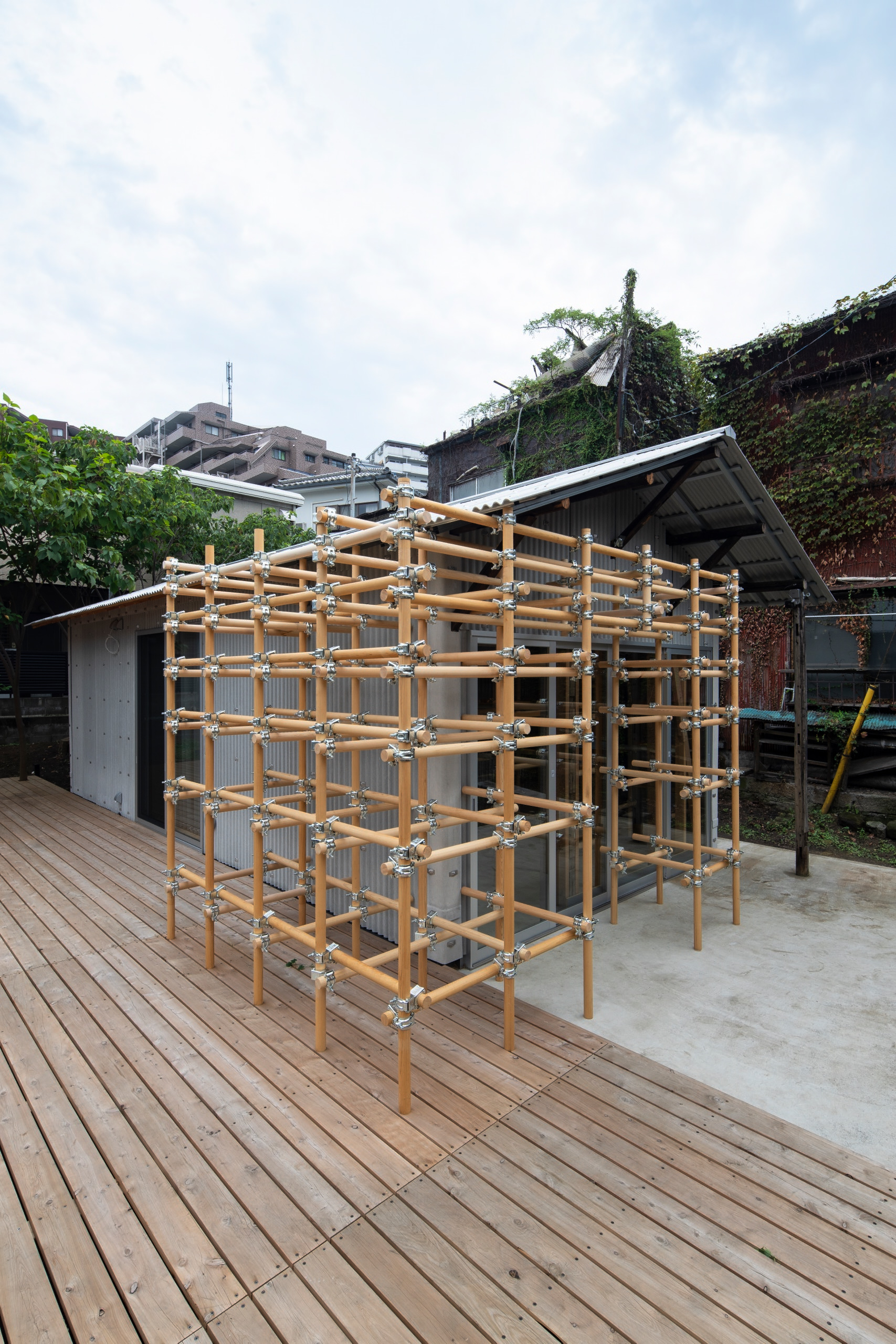シゴト
WORKS 125阪東橋の平屋

阪東橋にはルーヴィスが資材や道具を保管するための元米倉であった倉庫がある。
さらにその奥には、風化し、今にも倒れそうな風情で佇む平屋があった。
これを楽しく使える場にしようと始まったのが今回の改修プロジェクト。
当初は倉庫やイベントスペースとしての使い方を方を想定していたが、変遷を経て人の住める小屋を作ることを目指すことになった。
住まいとしての快適さを確保しつつも、小屋としての装いを残すよう素材を選び、
さらに可変性のある場所にするために、モクタンカンでファサードを製作した。
今後、住まい手がモクタンカンを使って、心地の良い場所を拡張し続ける事を想像して作られた小屋となった。
モクタンカン
アラキササキアーキテクツ
In Bandobashi, a neighbourhood of Yokohama, Roovice collaborated with the studio Araki + Sasaki architects to renovate a scattered 50-year old building in a hut-like house.
The building is located in a corner big plot, where all the accesses from the roads were and still are currently occupied by other constructions. This peculiar condition left the scattered hut without a direct connection to the street, which limited the solutions for the project.
In fact, the first idea was to demolish the leftover ruins and build a second warehouse for Roovice’ tools and materials anew, behind the existing one facing the street. This was not permitted though due to the Japanese constructions laws that doesn’t allow new erections without a viable vehicle access to them.
Hence, the only possible solution was to renovate the wrecked building.
As mentioned above, the existing construction was left to pieces due to a lack of maintenance and collapsed while somehow the only primary structure remained standing. All the other elements, from the perimeter walls to the interiors were too deteriorated to be repaired.
The project was developed together with Araki+Sasaki architects : the interior has been designed and constructed by Roovice, while Araki+Sasaki focused on the exterior.
The two studios shared the idea of creating a fun space which could have been expanded by the tenants.
For the outside, the architect saw this opportunity as the best chance to experiment with their latest constructive method called moktankan (moktankan.com): a modular system based on wooden clamp-connected pipes with multiple shapes possible that can find a use in a large variety of ways. The idea is coming from the metal scaffolding normally seen on construction sites, with this being much lighter thanks to the wood, and potentially a permanent structure.
Following the intention of creating an entertaining space, the project wanted to recall a past kids playground and its typical jungle gym with wooden pipes replacing the metal ones.
This was placed halfway through the entrance area, creating an inside and outside volume at the same time. During the construction, the architects decided to change the function from a warehouse to a dwelling, with a big enough entrance that could host different activities: from an exhibition space to an atelier, the moktankan helps to give the ambience the freedom of adding and removing elements according to the needs.
Regarding the interiors, all the materials used for the project came from the leftovers of the nearby Roovice’ warehouse. That generated an assorted texture for the pavement, incredibly lowered the costs and also helped the studio to reuse raw materials otherwise challenging to recycle.
At the same time, the team wanted to combine the comfort of a home with the aesthetic of a hut: the result is a contrast between the cold metal on the outside and the warm cosy inside.
Being a relatively small building, the floor plan is minimal but efficient: the existing structural elements define the bedroom and living, while both kitchen and bathroom have been enclosed in an expansion box each. A wooden deck develops along the south facade of the building and the concrete base, providing a pleasant atmosphere for the garden and the moktankan. For the facade, the corrugated sheets resemble an old Japanese warehouse and reduce the budget. Similarly, the corrugated plexiglass in the doma keeps the typical image and maintains harmony with the exterior material.
Divisare.com
Gooood.cn
Archello.com
Archinect.com
Re-thinking The Future
Architect Magazine













